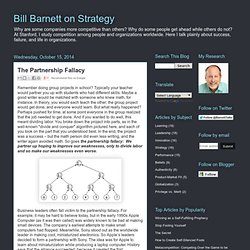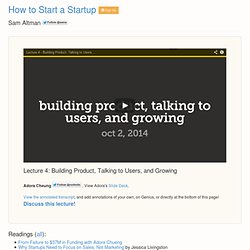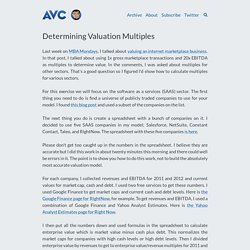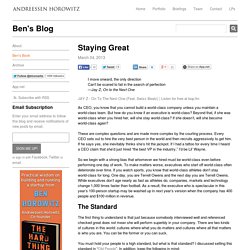

Partnership fallacy, Startup Inertia, User growth Mechanics and Valuation Multiples. The Partnership Fallacy. Remember doing group projects in school?

Typically your teacher would partner you up with students who had different skills. Maybe a good writer would be matched with someone who knew math, for instance. In theory, you would each teach the other; the group project would get done, and everyone would learn. But what really happened? Perhaps pushed for time, at some point everyone in the group realized that the job needed to get done. Business leaders often fall victim to the partnership fallacy.
What’s more, often partnerships fail even to accomplish their stated goal, never mind learning. The lesson: Partnerships are not a substitute for learning by doing. Inertia. Traffic jams.

They're hilarious, really. Humans tucked neatly single-file in their giant aluminum boxes, waiting patiently for three lights to alternate colors long enough to transcend into the heaven that is the next block closer to their destination. Ever hop in a cab or a bus and get stuck in a traffic jam? How many times have you decided fuck it, I'm just going to get out and walk — even if the walk is going to take you longer than the wait in traffic? And yet you do it anyway... because you're going places, dammit. A Few Non-Obvious Things I Learned as a New VC. Lecture 4 - How to Start a Startup. This text is annotated!

Click on the highlights to read what others are saying. If you'd like to add your own insights, comments, or questions to specific parts of the lecture, visit the lecture page on Genius, highlight the relevant text, and click the button that pops up. Your annotation will appear both here and on Genius. Thanks for having me. Today I am going to be talking about how to go from zero users to many users. I wrote this up early this morning and a lot of this is based off of mistakes I have made in the past.
Just a reminder that you should take all advice as directionally good guidance, but every business is different. When you start a startup you should basically have a lot of time on your hands to concentrate on the startup. So, like I said, when I first wrote this up I was thinking what are the things that most people do incorrectly when starting a startup. The next thing is that you have an idea and you should really think about what the idea is really solving. Determining Valuation Multiples. Last week on MBA Mondays, I talked about valuing an internet marketplace business.

In that post, I talked about using 1x gross marketplace transactions and 20x EBITDA as multiples to determine value. In the comments, I was asked about multiples for other sectors. That's a good question so I figured I'd show how to calculate multiples for various sectors. For this exercise we will focus on the software as a services (SAAS) sector. The first thing you need to do is find a universe of publicly traded companies to use for your model. The next thing you do is create a spreadsheet with a bunch of companies on it. Please don't get too caught up in the numbers in the spreadsheet. For each company, I collected revenues and EBITDA for 2011 and 2012 and current values for market cap, cash and debt.
I then put all the numbers down and used formulas in the spreadsheet to calculate enterprise value which is market value minus cash plus debt. The results of this exercise are as follows: What To Do When A Tech Giant Decides To Eat Your Lunch. Editor’s Note: This is a guest post by Mark Suster (@msuster), a 2x entrepreneur, now VC at GRP Partners.

Read more about Suster at his Startup Blog, BothSidesoftheTable. WWDC. The annual Apple event where no real hints about what products they plan to release are floated in the public domain in advance. No private head nods are given to small startup companies to help them prepare. We’re in a market where 800-pound gorillas throw their weight around and the rest of the market races to react and survive.
Staying Great. I move onward, the only directionCan't be scared to fail in the search of perfection—Jay-Z, On to the Next One JAY Z - On To The Next One (Feat.

Swizz Beatz) | Listen for free at bop.fm As CEO, you know that you cannot build a world-class company unless you maintain a world-class team. But how do you know if an executive is world-class? Beyond that, if she was world-class when you hired her, will she stay world-class? These are complex questions and are made more complex by the courting process. So we begin with a strong bias that whomever we hired must be world-class even before performing one day of work. The Standard The first thing to understand is that just because somebody interviewed well and referenced checked great does not mean she will perform superbly in your company.